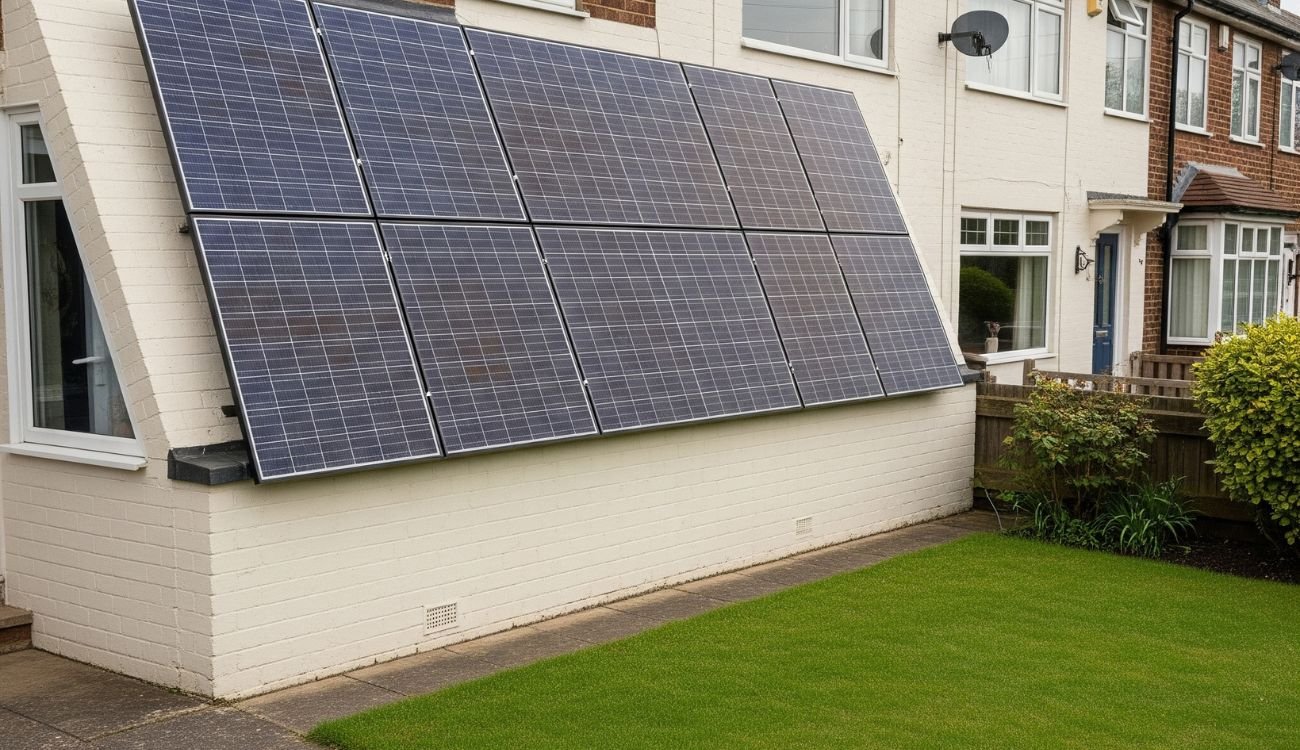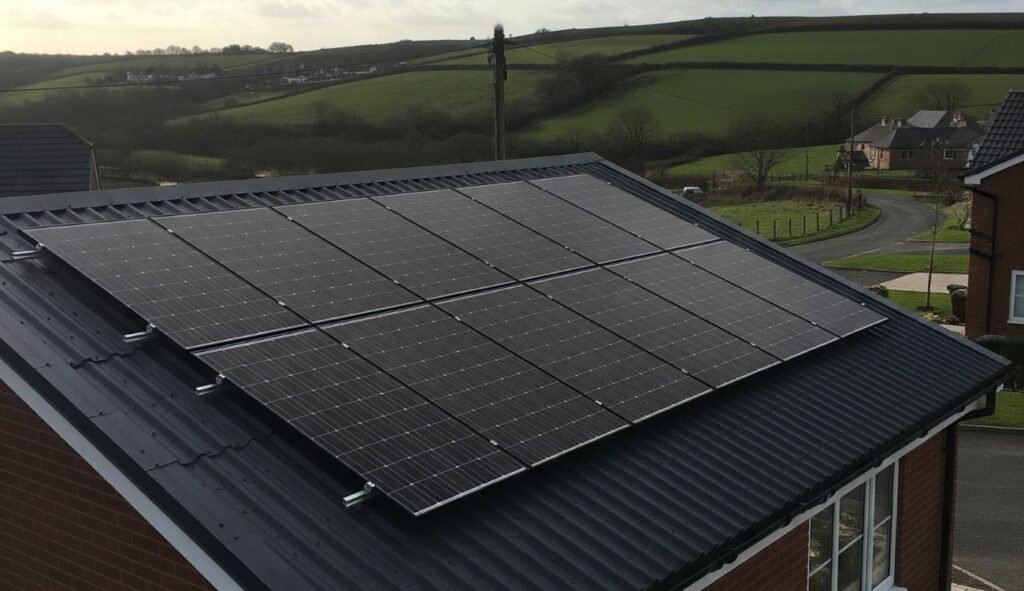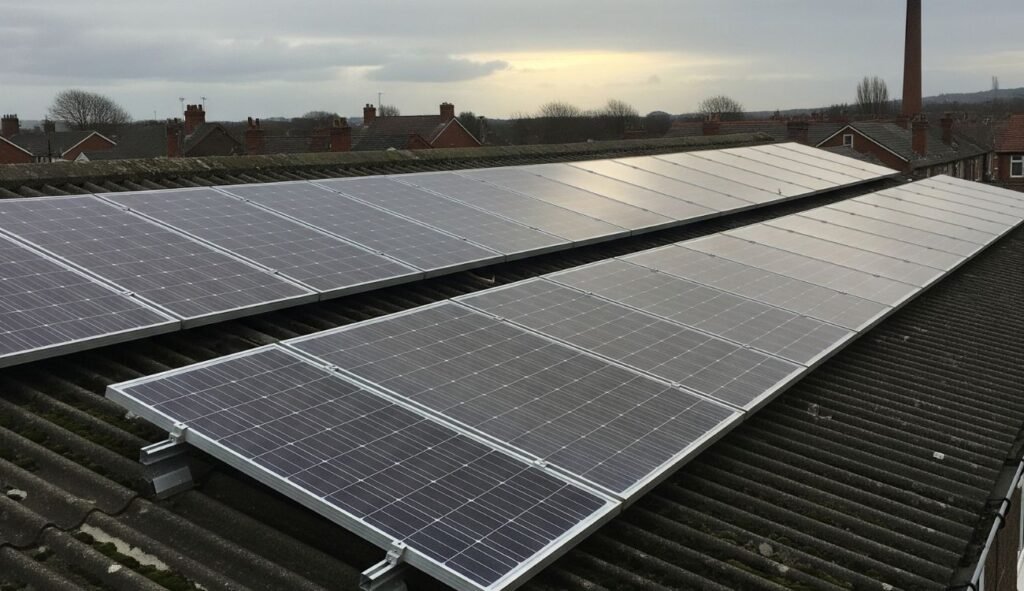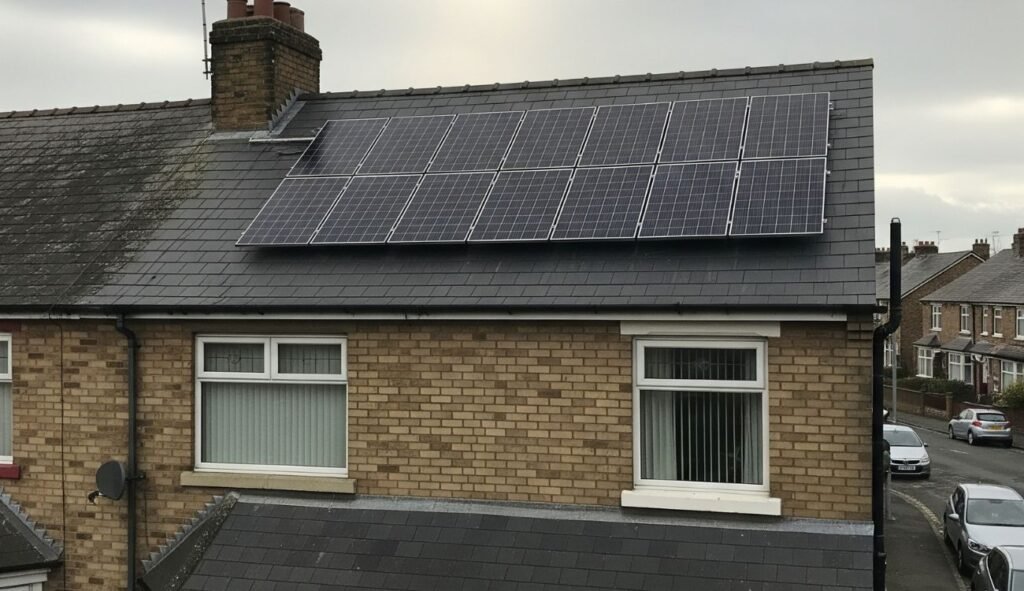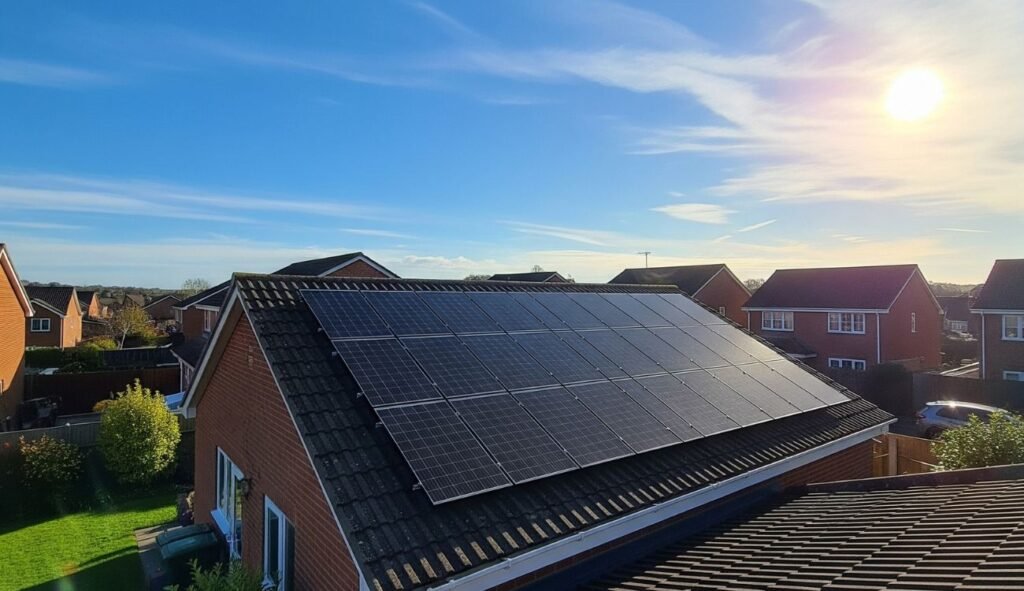Wall mounted solar panels are becoming increasingly popular across the UK, especially among property owners who face limitations with rooftop space or orientation.
Whether you’re a homeowner in Newcastle, a landlord in Sunderland, or managing a commercial property in Durham, wall mounted solar panels offer a viable solution for clean energy generation while adding value to your property.
With solar grants still available under government-backed schemes and rising energy prices, there’s never been a better time to consider installing wall mounted panels.
What Are Wall Mounted Solar Panels?
Wall mounted solar panels are photovoltaic (PV) systems that are affixed vertically to a property’s exterior wall rather than the roof. These systems function identically to rooftop solar panels, capturing sunlight and converting it into electricity through photovoltaic cells. This setup is particularly useful for:
- Properties with limited or shaded roof space
- Older buildings where roof installations may be unsuitable
- South-facing walls, especially those with direct sunlight during daylight hours
How Do Wall Mounted Solar Panels Work?
Solar panels mounted on a wall use the same solar technology as roof-mounted versions. They capture solar radiation even in lower-intensity light and convert it into usable electricity for the property.
However, because walls are generally vertical, the panels may generate less electricity compared to optimally tilted roof panels. That said, a south-facing vertical wall can still capture up to 70–75% of the solar energy of a roof-mounted array.
Can Wall Mounted Solar Panels Work in the North East of England?
Yes and efficiently too. While the North East receives slightly less sunshine than the South, solar irradiance in areas like Newcastle and Sunderland still supports effective solar production, especially in summer.
According to the Met Office, Tyne and Wear receives an average of 1,200 hours of sunlight annually, making it viable for solar panel use, including wall installations. South-facing vertical installations will perform best, especially during longer summer days.
If you’re in the North East, Future Heat offers tailored wall-mounted solutions with local weather patterns and solar angles in mind.
Pros and Cons of Wall Mounted Solar Panels
Advantages of Wall Mounted Solar Panels
- Maximises unused space: Frees up your roof while still generating solar power
- Ideal for shaded roofs: If your roof is overshadowed, your walls may offer better sun exposure
- Easier maintenance access: Ground-level panels are more accessible for cleaning and repairs
- Aesthetic flexibility: Panels can be mounted flush with the building façade
Disadvantages to Consider
- Reduced efficiency: Vertical orientation typically collects less solar energy than tilted rooftop systems
- Planning permission may be required: Especially for installations on listed or street-facing properties
- Higher install complexity: May involve more custom brackets or engineering support
How Much Wall Space Do You Need?
Each standard solar panel is roughly 1.7m x 1m in size. To install a 3kW system (approximately 8 panels), you would need around 13–15 square metres of unobstructed wall space.
If you’re unsure whether your wall gets enough sun exposure, it’s worth scheduling a site survey with a local installer like Future Heat who can advise on wall suitability, bracket engineering, and panel positioning.
What Are the Costs of Wall Mounted Solar Panels?
The cost of wall mounted solar panels in the UK varies depending on the system size, installation complexity, and the structure of the wall itself. While prices are generally comparable to roof-mounted panels, custom mounting can increase labour and equipment costs slightly.
Average Installation Costs (UK, 2025)
| System Size | No. of Panels | Estimated Cost (Incl. Install) | Daily Power Output (Avg.) | Suitable For |
|---|---|---|---|---|
| 1kW | 2–3 | £2,500 – £3,000 | ~3.2 kWh | Small flat or studio |
| 2kW | 5–6 | £3,500 – £4,500 | ~6.4 kWh | Small households |
| 3kW | 7–9 | £4,500 – £5,500 | ~9.6 kWh | Medium households |
| 4kW | 10–12 | £5,500 – £6,500 | ~12.8 kWh | Large homes |
| 5kW+ | 13+ | £6,500+ | ~16 kWh | Commercial properties |
What UK Government Grants and Incentives Are Available?
Installing solar panels, wall mounted or otherwise can be partially offset by current UK incentives and schemes, making the investment more attractive.
Smart Export Guarantee (SEG)
The Smart Export Guarantee (SEG) allows you to earn money by exporting surplus electricity back to the National Grid. Energy suppliers pay you per kilowatt-hour (kWh) of electricity exported.
According to Ofgem, SEG payments vary between suppliers, but rates typically range from 2p to 15p per kWh.
ECO4 Scheme
While not all wall-mounted systems qualify, some households in low-income brackets may receive energy efficiency upgrades under the Energy Company Obligation (ECO4) scheme. The scheme primarily targets insulation, heating, and renewable technologies for fuel-poor homes.
VAT Relief on Solar
As of 2022, the UK Government has applied a 0% VAT rate on the installation of solar panels, including wall-mounted systems, for residential properties. This is part of the government’s green energy initiative and could result in significant savings on installation costs.
Are Wall Mounted Solar Panels Right for Your Property?
Whether you’re dealing with roof shading, architectural limitations, or just want a sleek installation on a south-facing wall, wall-mounted solar panels can be a smart investment.
They offer flexibility, energy savings, and potential SEG income, all while making use of space often left unused.
It’s important to evaluate factors like sun exposure, wall size, and building orientation before proceeding. A professional installer like Future Heat will conduct a feasibility assessment and walk you through your options.
Frequently Asked Questions (FAQs)
Installing panels on a listed property or in a conservation area often requires planning permission from the local council. Always check with your local planning authority before proceeding.
Yes. Because they’re more exposed to wind-blown debris and less likely to benefit from rainwater cleaning, vertical panels may require more frequent cleaning to maintain optimal performance.
No. In fact, wall-mounted systems tend to run cooler than rooftop panels because they often have better airflow behind them—improving long-term efficiency and panel lifespan.
Absolutely. Many properties benefit from hybrid installations, combining both roof and wall systems to maximise daily solar exposure and generation capacity.
Yes. Most manufacturers provide the same 25-year performance warranties, regardless of mounting orientation, as long as the panels are installed correctly and maintained.
Final Thoughts
Wall mounted solar panels offer a practical, flexible, and increasingly popular alternative to traditional rooftop systems especially for UK homeowners and landlords dealing with shaded roofs or limited space.
With rising energy costs, VAT relief, and the Smart Export Guarantee, there’s a strong financial incentive to invest in solar in 2025.
Myles Robinson is a seasoned expert in the boiler and home improvement industry, with over a decade of experience. He is deeply committed to environmental sustainability, actively promoting energy-efficient heating solutions to help households reduce their carbon footprint. By combining industry expertise with a dedication to environmental responsibility, Myles continues to lead efforts in transforming home heating practices towards a more sustainable future.

